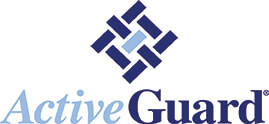NATIONAL REPORT—Not preventing bed bugs drains human resources.
Over the past few weeks in this space, we have covered various direct and indirect costs associated with a bed bug infestation. Now, let’s look at the least obvious—time. Surprisingly, most hoteliers do not consider their employees’ most valuable asset when calculating the true cost of a bed bug incident.
- Dealing with disgruntled guests
- Relocating guests to a new room or hotel
- Inspecting a complaining guest’s room and adjoining rooms
- Packing and moving guests’ belongings
- Transporting guests’ dry cleaning
- Ensuring other guests are not disturbed or impacted
All of these sensitive issues take time—time during which staff should be delivering a first-class experience for guests, not doing damage control.
In addition, properly disposing of soft goods may also be necessary. If it is determined sheets, pillows or a mattress must go, they need to be properly wrapped and bagged in order to be disposed of and removed by either a public or private waste management company. Again, this means more time, but it gets worse.
Following a bed bug incident, staff often report losing confidence in their employer’s ability to protect guests, and them, from bed bugs. The concern over potentially bringing bed bugs home from the hotel can cripple the staff’s ability to thoroughly vet a guest’s bed bug complaint. This impact on a team’s psyche is damaging, resulting in employee turnover that also comes with a cost.
What can a hotel do?
In addition to having a strong standard operating procedure in place for when (not if) a guest complains about bed bugs, a solid, field-proven bed bug prevention program, with active mattress liners installed on mattresses or box springs, can stop infestations from occurring. And prevent a bed bug incident from turning into an expensive, embarrassing, and potentially litigious situation. To learn more about bed bug prevention in hospitality and how you can avoid being the next negative bed bug review on Trip Advisor, sign up for a free one-on-one webinar.
While you are at it, help us educate the industry on the true cost of bed bugs by taking our survey. We look forward to sharing the results.
About Allergy Technologies
ActiveGuard Mattress Liners kill bed bugs. Easily installed on mattresses or box springs, these liners offer two-year continual prevention and control against any adult bed bugs, nymphs or eggs. ActiveGuard has no cautionary signal words or use restrictions on its label. Only four sizes—single/twin, double/full, queen and king—fit almost every available mattress or box spring and accommodate up to extra-large in length and 17-in. in depth. Underlying is ActiveGuard’s formulation; a unique and proprietary delivery system that offers sustained bioavailability of permethrin for two years. Newest research supports that after a short exposure to ActiveGuard of only 10 minutes, bed bugs regardless of their level of resistance, begin to show significant reductions in feeding (biting) and a dramatic inability to lay eggs. This results in discontinuation of population growth thereby halting progression of an incident to an infestation. If you are seeking a pro-active preventative approach, ActiveGuard should be considered as the centerpiece of your long-term solution to keep bedding from being infested. ActiveGuard Mattress Liners are covered under U.S. Patents 5,916,580, 6,214,365, 6,440,438 and pending patents. For more tips on preventing bed bugs and uncovering infestations early visit us online at www.hotelbedbugprevention.com.

